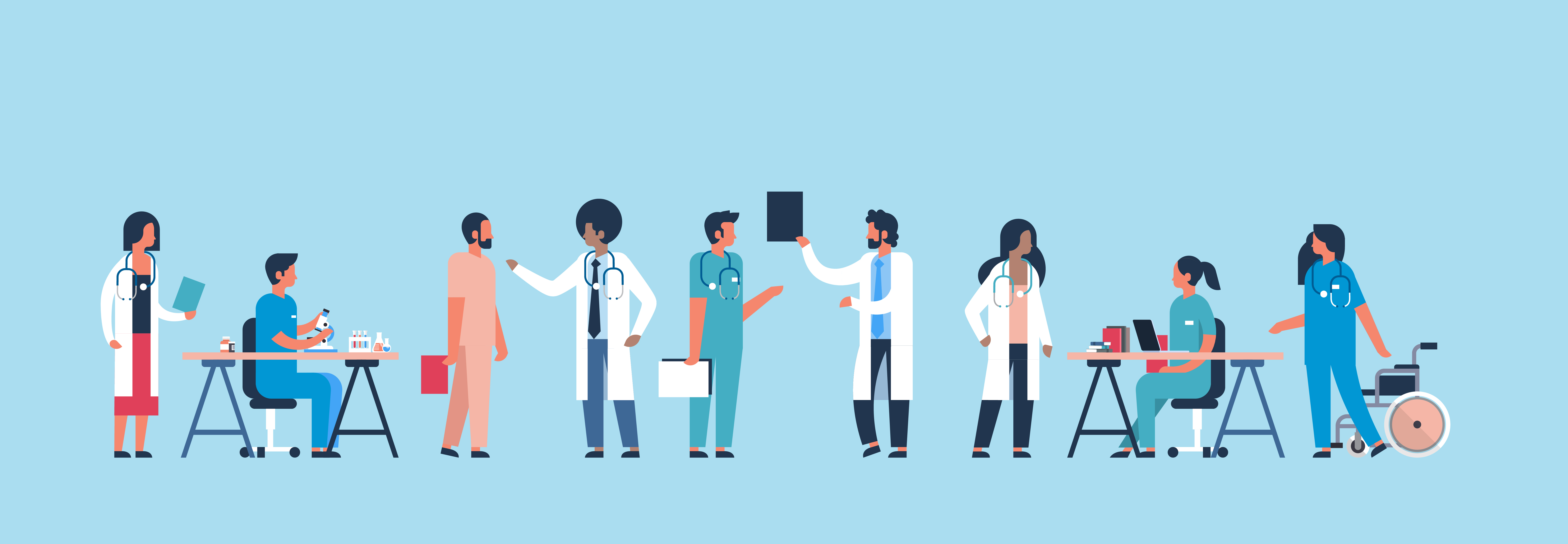In the quest for healthcare innovation, there is no Holy Grail.
January 30, 2020In the quest for healthcare innovation, there is no Holy Grail. Messiness prevails over methodology, and that’s OK.
Health Innovation Network’s Director of Patient Safety and Experience, Catherine Dale, and Deputy Clinical Director (Musculoskeletal) and Evaluation lead, Andrew Walker, debunk the myths and share the joys of a flexible approach when innovating in health.

As AHSNs, we’re often asked ‘What’s your innovation methodology?’, ‘How do you do it?’, ‘What framework do you use?’. It can feel like a relentless search for some sort of Innovation Holy Grail. Take this cup, drink from it and thy team will be innovative forever more.
The reality is that simply transmitting a good idea does not work, no matter the time you will potentially release or the money associated with it. In terms of what does work, well, there isn’t a single approach that will cut it. From the perspective of the person who has the good idea and wants others to use it, this can be deflating. But that’s part of the issue. Innovation is traditionally looked at from the perspective of the innovator. If we stop looking at innovation from the perspective of the innovation or product and start looking at from the perspective of the local system that has to adopt the new idea, it’s a lot easier to understand how scale up works in practice and what you really need to do to achieve true spread and adoption.
Step one – take everything you thought you knew about spreading innovation and challenge it.
Debunking the myths of spread
MYTH ONE: Data and evidence will win people over.
This myth is about the belief that if you present people with convincing enough evidence they will be persuaded to change what they do. There are multiple reasons why it is not as straightforward as that. Data and evidence are a starting point for discussion and evidence is justification for a solution, but this happens after the complex process of decision-making. Behavioural science informs us that increasing complexity of decision-making leads humans to take cognitive shortcuts also known as ‘gut instinct’: Does this feel good or bad? Do I like it or not like it?
Even when evidence is clear and strong, as humans our decisions are multi-faceted. This means that while resistance to new innovation does often result from resource issues or a lack of time to implement change, it can also come down to more complex behavioural factors.
MYTH TWO: ‘Simple’ innovation exists in healthcare.
While an idea itself may be simple, the act of spreading that innovation is always complex. Take the case of mobile ECG devices. These new mobile devices easily and quickly detect Atrial Fibrillation (AF), the most common type of irregular heartbeat, which is directly linked to higher risk of stroke. In 2018, we embarked on a project to roll these devices out across south London to detect more people at risk of AF and prevent strokes. The concept was simple and so was the device. It takes a matter of minutes and can be used in a range of settings, from primary care and pharmacies, to the home and workplace. But while the device was simple, the roll out was not.
Training was vital – particularly on communication when a positive finding is discovered. Consider the pharmacy setting. It’s one thing to walk into a pharmacy to buy some shampoo. It’s quite another to walk out having been told you have AF and have a high risk of stroke. Staff needed to be trained not only on the device but on how to deal with this situation, not to mention any IT aspects. As the devices went into more novel settings (mental health, podiatry, therapy teams), more AF was detected but the innovation became even more complex to spread successfully. Pathways needed redesigning to ensure that treatment followed detection. If you are tested in a GP surgery then there may be a GP on hand to initiate treatment, but if you are tested at work, a library or in a prison then the next step is more complicated.
What’s easy to shout about as a no-brainer still involves enormous amounts of graft and change to make it work.
MYTH THREE: Innovation always saves time. We hosted a number of London-based Chief Nursing Officers recently for a conversation specifically focused on how digital innovation in healthcare could save them time. They called this out straight away. Taking the time to use new electronic record systems and document every single aspect of a patient’s care properly will take their teams more time than previous suboptimal paper approaches, at least initially. Saving them time is not only a potentially unrealistic promise, it wasn’t the main motivator for change for the nurses we spoke to. They were more interested in how it made care safer and enabled colleagues in other teams to access the data more easily.
This messiness of transformation, which is not unique to digital innovation, is often glossed over. New systems can be a step in the right direction but in the short-to-medium term may also create confusion. Even safety is nuanced. New innovations can reduce existing safety risks at the same time as bringing about new ones. Innovative new pathways or systems can solve one problem while unintentionally creating another for a different set of professionals or staff group. It takes time and effort to understand and address the knock-on effect of new innovations.

Messiness, models and methodologies
Innovation is complex. In healthcare it’s never a linear journey. We don’t stick to one methodology here at HIN and to pretend otherwise would be too simplistic. We do have a framework. Our approach is based on the insights of clinical academics in Implementation Science and NHS England’s Change Model and these concepts underpin all our projects.
Our answer to the messy reality and the myths above is this: the detail of our approach is different every time. It depends on the unique circumstances facing the healthcare teams we are trying to support. Teams have their own set of barriers, enablers, level of knowledge, risk appetite, culture and funding mechanisms. Our silver bullet is our flexibility. Our expertise is our ability to analyse individual team scenarios, to collaborate and tailor our approach to their need. We don’t look at the problem only from the perspective of the innovation or the product, we look at it from the perspective of the local system that will potentially use it.
When we start with the perspective of busy local teams, we are able to build trust, help in genuine ways rather than pushing products, and ultimately, affect change. This process is dynamic, iterative and nonlinear. In technical terms, it operates on a Complex Adaptive System model, which prioritises flexibility and agility. This is a new way of working for a lot of our partners, who are more familiar with having a clear project plan with fixed milestones and a clear route from A – B, and as such, part of our role is to help the system understand the complexity of implementing innovation so they don’t get disheartened by the non-linear route. Insight (both data-driven and from experience), relationships, judgement and tenacity are some of the most important parts.
We don’t stick to one methodology here at HIN and to pretend otherwise would be too simplistic.
The joys of persistence
Our responsiveness and agility may mean that we can’t produce a perfect gant chart for every step of every project. But it works. Persistence pays huge dividends.
In the case of AF alone, as a national AHSN Network we’ve directly contributed to anticoagulation therapy being provided to 150,000 more people who are at high risk of a stroke. We’ve seen innovations and products adopted at scale: in just two years, an innovation that prevents cerebral palsy in pre-term labour has been adopted at 96% of maternity units – avoiding an estimated 24 cases of cerebral palsy with associated lifetime savings in health and social care costs of £19.6 million. In the same time period, an innovation for people with chronic hip and knee pain has spread from 50 to over 250 sites across England, a 5x increase in sites and a 15-fold increase in the number of patients benefiting – so far almost 8,000 people with osteoarthritis have taken part.
So perhaps the greatest and most dangerous myth of all is that innovation’s complex, messy nature means that the NHS is not making fair progress. There may not be a Holy Grail, but every day, health and care teams are proving that they are inherently and passionately innovative. Their efforts are ensuring that people live well, for longer and that the NHS remains one of the greatest, most successfully spread innovations of all time.
About the authors
Catherine Dale has nearly twenty years’ experience in the NHS in London, including more than fifteen years in service improvement and transformation roles; a Masters in Business Psychology and expertise in Experience-Based Co-Design.
Andrew Walker is a physiotherapist by training and has a PhD in implementation science. Andrew’s role involves helping to build the evidence and practice of implementing innovation and evidence-based interventions across health and care in south London (and across England). He is a Board member for the UK Implementation Society.
Share this Post
